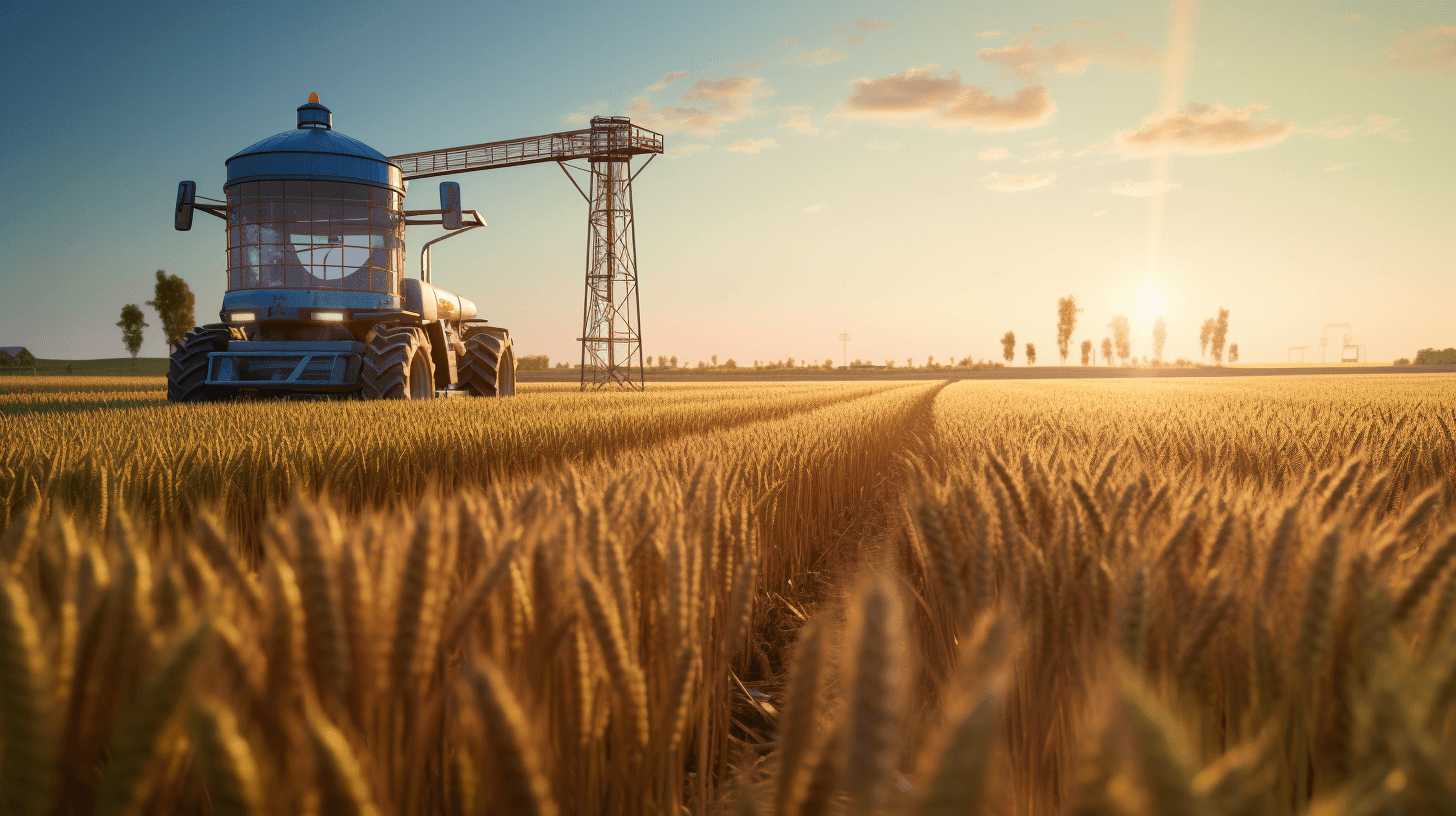🌾💧🔥 Kansas Wheat Kine: First Burnt, Den Wet Wet!
⬇️ Pidgin | ⬇️ ⬇️ English
Da story of one small 160-acre patch in Kansas? Ho, dat’s one gnarly wheat season story, brah! 🌾🔥
One side? Das jus’ dirt, no more watah, da wheat wen’ pau. Other side, get lotta weed and small kine wheat, notting too fancy but still okay for harvest. And by da trees? Sheesh, da best kine wheat, but too much watah, cannot even pick ’em up! 🌳💦
Da big braddah, Jason Ochs, wen say dis kine stuff, he neva seen in his life farming da land.
Now, while da big beef between Ukraine and Russia making da wheat market all buggah, Kansas farmers get da tiniest harvest in ova fifty years. Whatchu think da reason? Dry dry weather and den rain wen come too late for da winter wheat. Dis weather kine action, making da farmers scratch their heads and tink big bout da future of Great Plains wheat. 🌪️☔️
Professor Xiaomao Lin from Kansas State University wen say, going forward, going get hot and less rain. Dat’s bad news for wheat! Da same professor wen write one paper last year showing how wheat loss connected to big heat, mean winds, and not enough moisture. He wen say, too, dis season was da driest eva in 128 years, even more than da Dust Bowl time, but kinda early fo’ say if all dis cause of climate change.
Wheat? In Kansas, das big kine thing. Before, da license plates wen say “The Wheat State”. Wheat not just for eating local, but also sell to places like Latin America. 🌎🍞
Den, Russia wen attack Ukraine, and made everybody scared ’bout da world’s wheat supply. Good ting, get other countries with big harvest, but still get worries, especially wen Russia wen make move on da big ports and stop da wheat from Ukraine crossing da Black Sea.
On top da Plains, da war making da prices all over da place, some farmers feeling their work mean even more now. Prices wen go up cause of da war stuff, but still hard for da farmers cause not enough wheat for sell.
Halfway between Kansas City and Denver, one farmer, Mike McClellan, his farm stay all dry. He neva could harvest any of his winter wheat. And oddah places, like by Colorado, wheat wen nearly die cause no rain, den wen nearly drown cause too much rain. Like in Syracuse, neva get dis much rain since 1951. 🌧️🌾
Mr. Ochs, he say his mind stay all blown. His winter wheat wen die, but da spring crops? Da best he eva seen. He wen talk to da old-timers and dey say same ting, dey neva seen nothing like dis.
But no only Kansas getting dis kine weather. Places like California wen get floods after long drought, Nebraska had cows dying cause of da heat and humidity, and Georgia lost all their peaches cause warm winter and den freeze in March.
All over da world, da earth getting hot. According to the European Union’s Copernicus Climate Change Service, July was da hottest month ever. And da ocean? Ho, stay hotter than before.
Scientists say da earth wen get hotter by 2 degrees Fahrenheit since long time ago, and going stay like dat until we stop burning all da oil and coal. Da hot temperatures making da weather even more crazy.
One scientist from the National Oceanic and Atmospheric Administration, Doug Kluck, say everything going on now, kinda hard for understand. But he think something different happening. Not like before.
“Is like trying to see da big picture, not jus’ what’s happening in your own backyard”, Mr. Kluck said. Not like da old days, dis kine weather, neva happen before.
NOW IN ENGLISH
🌾💧🔥 Kansas Wheat Woes: From Scorching Heat to Torrential Rains
The story of a mere 160-acre stretch in Kansas perfectly sums up the challenging wheat season we’re facing. One part of this field lies barren due to drought, while another section, overwhelmed with weeds, boasts only a modest wheat yield. However, near the tree line, the wheat appears thriving, misleadingly so, as the overly saturated ground prevents its harvest. 🌳💦
Jason Ochs, the farmer overseeing this plot, remarked that he’s never witnessed such an erratic season.
While the tension between Ukraine and Russia is wreaking havoc on the global wheat market, Kansas farmers are facing the smallest harvest in over fifty years. The reason? Prolonged drought followed by too-little-too-late rainfall, particularly affecting the winter wheat. This unpredictable weather has left farmers perplexed and concerned about the future prospects of the Great Plains wheat crop. 🌪️☔️
Professor Xiaomao Lin from Kansas State University indicates that the region is expected to experience rising temperatures and declining rainfall, which spells bad news for wheat. The professor also published a study last year, highlighting the correlation between wheat yield loss and extreme heat, strong winds, and inadequate moisture. The start of this season was recorded as the driest in over a century, surpassing even the Dust Bowl era. Still, it’s premature to solely attribute this to climate change.
Wheat holds immense significance in Kansas, once even commemorated on its license plates. It’s not just consumed locally but also exported to regions like Latin America. 🌎🍞
Russia’s invasion of Ukraine intensified concerns about global wheat supply. Although other nations have managed impressive harvests, apprehensions remain, especially after Russia imposed restrictions on major grain-shipping ports, further obstructing Ukrainian wheat’s movement across the Black Sea.
This geopolitical tension coupled with the unpredictable weather has greatly influenced the Plains’ wheat prices. Although prices have surged, primarily due to European unrest, numerous American farmers are grappling with smaller yields.
In the area between Kansas City and Denver, farmer Mike McClellan reported enduring persistent drought conditions. In fact, for the first time in his farming career, he couldn’t harvest any of his winter wheat. Contrastingly, regions close to Colorado, which initially seemed threatened by drought, later struggled with excessive rainfall. For instance, Syracuse received its heaviest rainfall since 1951. 🌧️🌾
Ochs noted the disparity in his crops; while his winter wheat failed, his spring crops were among the best he’s cultivated. Older farming veterans resonated with his sentiments, expressing they’ve never encountered such an unpredictable season.
But these climatic extremes aren’t limited to Kansas. California recently transitioned from severe drought to flooding, Nebraska saw extensive cattle fatalities due to overwhelming heat and humidity, while Georgia’s peach crop was nearly wiped out due to an unusual warm winter followed by March frosts.
Global temperature records were shattered in July, as per the European Union’s Copernicus Climate Change Service. Oceans, too, are experiencing unprecedented temperature highs.
Researchers highlight that the Earth has warmed by approximately 2 degrees Fahrenheit since the 19th century, a trend that’s projected to persist unless we curb our dependency on fossil fuels. This global temperature rise is contributing to extreme weather occurrences.
Doug Kluck, from the National Oceanic and Atmospheric Administration, emphasized that while local extreme weather events may have historical precedents, the larger picture suggests we’re in uncharted territory. He believes we should not just focus on regional changes but recognize that these climatic shifts are happening globally.







